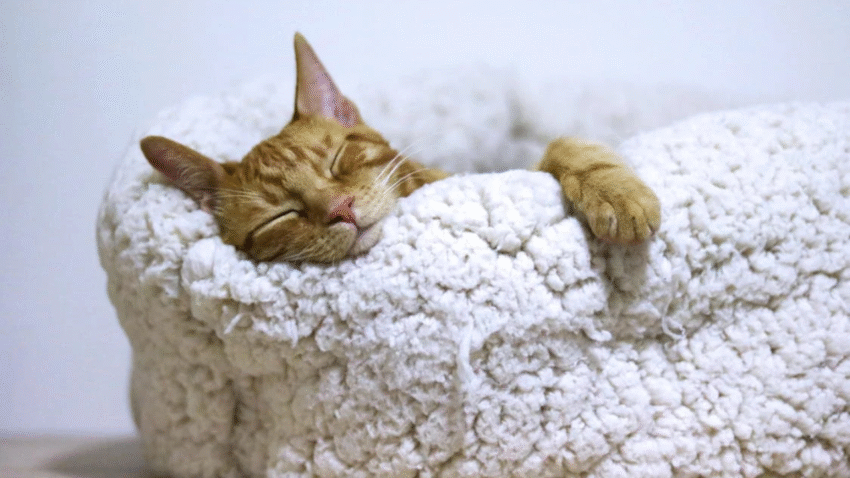Introduction
Think your cat’s dental health isn’t a big deal? Think again. Poor oral hygiene in cats can lead to gum disease, tooth loss, and even life-threatening infections. Fortunately, with a few easy habits, you can significantly improve your cat’s dental health at home. In this guide, you’ll learn how to brush your cat’s teeth, choose dental-friendly foods and treats, and spot the warning signs of dental problems before they become serious.
If your cat has bad breath or drools more than usual, it’s time to take a closer look at their oral care.
Why Dental Health Matters for Cats
Dental disease is one of the most common health issues in cats, especially as they age. More than 70% of cats over the age of 3 show signs of dental problems—but many owners don’t notice until it’s too late.
Here’s why dental health is important:
- Prevents plaque buildup and gum disease
- Reduces risk of tooth loss and painful infections
- Improves appetite and overall comfort
- Supports heart, kidney, and liver health by lowering bacterial load
Good dental care can help your cat live a longer, healthier, and more pain-free life.
Step-by-Step Guide to Improving Dental Health at Home
Use this plan to build an effective at-home dental care routine for your cat.
1. Start With Regular Brushing
Brushing is the gold standard for feline dental care.
- Use a cat-specific toothbrush or finger brush with enzymatic cat toothpaste.
- Never use human toothpaste—it contains ingredients like xylitol and fluoride that are toxic to cats.
- Introduce brushing slowly:
- Start by letting your cat sniff and lick the toothbrush and toothpaste.
- Gently lift their lips and rub their gums with your finger.
- Progress to brushing in small circles along the outer surfaces of the teeth.
💡 Tip: Even brushing 2–3 times per week can significantly reduce plaque and tartar.
2. Use Dental Treats and Chews
- Look for VOHC-approved dental treats (Veterinary Oral Health Council) designed to reduce plaque.
- Crunchy textures help scrape away buildup while your cat chews.
- Limit treats to 10% or less of daily calories to prevent weight gain.
Dental treats are a great addition, especially if your cat doesn’t tolerate brushing.
3. Switch to Dental-Approved Food (Optional)
- Some commercial cat foods are formulated to support oral health by:
- Encouraging chewing
- Reducing tartar buildup
- Including ingredients that promote gum health
Ask your vet if a dental-specific diet is right for your cat—especially if they’re prone to plaque or have mild dental issues.
4. Try Water Additives or Oral Gels
- Add vet-approved oral rinses or water additives to your cat’s drinking water to help kill bacteria and freshen breath.
- Use dental gels or sprays as a brushing alternative, applying them directly to the gum line.
These options can be helpful for cats who are resistant to brushing, though they’re not as effective on their own.
5. Provide Toys That Promote Dental Health
- Offer textured rubber or silicone toys that encourage chewing and gum massage.
- Avoid string or hard plastic toys that can break teeth or cause injury.
Supervised chew sessions are both entertaining and beneficial for your cat’s teeth.
6. Monitor for Signs of Dental Disease
Keep an eye out for these warning signs:
- Bad breath
- Drooling
- Pawing at the mouth
- Difficulty eating or chewing
- Red, swollen, or bleeding gums
- Loose or missing teeth
If you notice any of these symptoms, schedule a vet visit immediately—your cat may need a professional cleaning or treatment.
Common Mistakes to Avoid
Watch out for these common errors in feline dental care:
- Using human toothpaste
➤ Ingredients like xylitol and fluoride are toxic to cats. Always use a vet-approved cat toothpaste. - Skipping brushing entirely
➤ Even occasional brushing can make a big difference. Don’t wait until there’s a problem. - Using harsh or unsafe toys
➤ Bones, string, or hard plastic can damage your cat’s teeth or cause choking. - Assuming dry food alone cleans teeth
➤ While dry kibble helps a little, it’s no substitute for brushing or dental care products. - Ignoring bad breath
➤ Foul-smelling breath is often the first sign of gum disease or infection.
Extra Tips & Recommendations
Here are some bonus strategies for supporting your cat’s dental health:
- Reward brushing sessions with a treat or toy to build positive association.
- Keep your cat calm during oral care—choose quiet times when they’re relaxed.
- Schedule annual dental exams with your vet. They may recommend professional cleanings based on your cat’s age and risk level.
- Start early—kittens who get used to brushing young are more likely to tolerate it long-term.
If your cat resists brushing, be patient. Many cats need a few weeks to become comfortable with the routine.
Looking for more grooming help? Check out our guide How to Brush Your Cat’s Coat Without Causing Stress for a full grooming routine that supports overall health.
Conclusion
Improving your cat’s dental health at home isn’t complicated—it just takes consistency and the right tools. With regular brushing, smart product choices, and close observation, you can help your cat avoid painful dental problems and stay healthy for years to come.
🐾 A clean mouth equals a happy cat—and a happier, fresher-smelling home, too.
